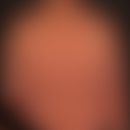Synonym(s)
DefinitionThis section has been translated automatically.
Erythrosine is a red, synthetic, cherry-red food additive (belonging to the group of xanthene dyes) which is soluble in water and ethanol. In an alkaline environment the substance turns yellow-brown.
General informationThis section has been translated automatically.
Its use in food, cosmetics and pharmaceuticals is limited: for cocktail cherries, cosmetics (often for lipsticks), as a color for Easter eggs and as a drug additive for the coloring of coated drug coatings.
OccurrenceThis section has been translated automatically.
Erythrosine has a high iodine content (possible influence on thyroid function!). The intervention in the thyroid function is said to be able to trigger uncontrolled impulsiveness of hyperactive children, for example.
Erthrosine is photosensitive and has an antibacterial and antimycotic effect at wavelengths of 532nm via a photodynamic effect.
Erythrosine is used as a dental plaque indicator for the visualisation of microbial plaques; furthermore as a gallbladder contrast medium.
LiteratureThis section has been translated automatically.
- Chequer FM et al (2012) Genotoxic and mutagenic effects of erythrosine B, a xanthene food dye, on HepG2 cells. Food Chem Toxicol 50:3447-3451.
- Costa AC et al (2011) Susceptibility of Candida albicans and Candida dubliniensis to erythrosine- and LED-mediated photodynamic therapy. Arch Oral Biol 56:1299-12305.
- Garg AD et al (2012) In vitro studies on erythrosine-based photodynamic therapy of malignant and pre-malignant oral epithelial cells. PLoS One 7:e34475.
- Lee YH et al (2012) The photodynamic therapy on Streptococcus mutans biofilms using erythrosine and dental halogen curing unit. Int J Oral Sci 4:196-201.
- Yassunaka NN et al. (2015) Photodynamic Inactivation Mediated by Erythrosine and its Derivatives on Foodborne Pathogens and Spoilage Bacteria. Curr Microbiol 71:243-251.




